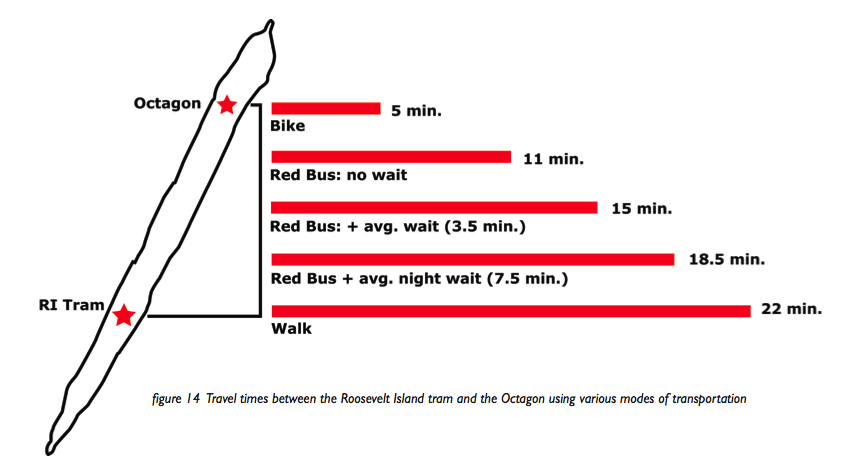Roosevelt Island Aims to Pioneer Bike-Sharing in NYC
 A rendering of a bike-sharing station at the Roosevelt Island F train station. Image: AccessRI/Hunter College Dept. of Urban Affairs and Planning.
A rendering of a bike-sharing station at the Roosevelt Island F train station. Image: AccessRI/Hunter College Dept. of Urban Affairs and Planning.As cities across the United States open new bike-sharing systems this year, New York City’s commitment to launching bike-share remains cloudy. On the semi-independent Roosevelt Island, however, momentum is building to launch a small bike-sharing system with or without the rest of New York.
Enthusiasm for bike-sharing was evident at a demo station set up by the company B-Cycle on the island yesterday afternoon. "We’ve had a bunch of people come by, use the bikes and test them out," said Erica Wilder of the Roosevelt Island Operating Corporation, the island’s governing body. "Everyone’s been pretty favorable."
RIOC recorded reactions through surveys taken at the demo site. With only one station, yesterday’s demo was really showing off the value of bike rentals. Enthusiasm may have been even higher if Roosevelt Islanders could experience the convenience of real bike sharing, hopping on a bike at the F Train, say, and then dropping it off at a station near their apartment.
That’s the ultimate vision for the program, said Wilder, who said that the goal is to install at least three stations on the two mile-long island.
 Bikes can make it down Roosevelt Island much faster than other travel options. Image: AccessRI/Hunter College.
Bikes can make it down Roosevelt Island much faster than other travel options. Image: AccessRI/Hunter College.About 12,500 people live on Roosevelt Island, according to a study of accessibility on the island by a team at Hunter College. If bike-sharing eventually makes it to the whole island, the Hunter team found that it could reshape the way residents and visitors get around.
It currently takes 22 minutes to walk from the Octagon, a landmark toward the northern end of the island, to the Roosevelt Island tram into Midtown. Using the Island’s Red Bus only saves a little bit of time; including the average wait, the same trip takes 15 minutes, or 18.5 minutes at night. In contrast, you could cover that distance in five minutes on a bike. According to the Hunter study, that sort of time savings could convince people to use transit instead of driving to leave the island.
In addition to the Hunter College team, an independent group of researchers from Columbia University [PDF] also recommended bike-sharing as well-suited for self-contained Roosevelt Island. The two studies played a large role in bringing the concept to the RIOC’s attention, said Wilder.
Wilder expects bike-sharing to be used for all kinds of trips, from commutes to errands and recreation. "We have a lot of bike riders on the island," she explained, noting that bike racks are consistently packed full.
Once the surveys gathered yesterday are compiled, said Wilder, "it’s just figuring out the funding aspect of it." She estimated that setting up the program would cost the RIOC around $3,500 per bike, although membership and rental fees would repay some of that cost. "At first we’ll take a hit, but in the end, it’ll pay for itself within a two-year, three-year period," she said.
For now, Roosevelt Island is moving toward bike-sharing on its own. "It would be great if we could be the pilot location for New York City," said Wilder, who added that integration into a citywide bike-sharing system would be the preferred model. "But if New York City doesn’t want to bring it," she shrugged, "folks can always come and this will be an attraction."





